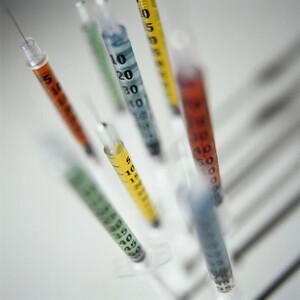US Congress should ensure that patient safety and medical efficacy are prioritised in a healthcare-reform measure that allows the use of follow-on biologics (or FOBs) according to David Nash of the Jefferson School of Population Health. Rather than just debating data exclusivity for follow-on biologics, lawmakers should also specify rules on testing these drugs and consider requiring post-market surveillance to avoid ‘unintended consequences’ that compromise patient safety, he writes.
“As healthcare providers, the primary mission of physicians and other medical professionals is the well-being and safety of patients. The American public puts its trust in us, and its government, to assure that the medicines we provide are safe, well tested, and effective. Nowhere is this challenge more important than in the emerging area of follow-on biologics, a class of drugs made from organic, living material [he probably means ‘a class of organic molecules (usually proteins) made via biochemical processes in living cells’]. Follow-on biologics are responsible for some of the most advanced care available to patients suffering from cancer, diabetes and other debilitating diseases”.
While the recent debate over how to guide FDA approval of biosimilars has largely been settled in US Congress, the overall healthcare-reform legislation continues to be in a state of flux. To the extent that the FOB approval pathway has not yet been settled and there is speculation about reopening the debate, seemingly all of the attention is focused on the term of exclusivity. “This focus is extremely short-sighted, and ignores the broader need of ensuring patient safety for both current and future drugs,” claims Mr Nash.
According to Mr Nash, FOBs are similar to generic chemical drugs in that they seek to mimic the medical qualities of existing drugs. “But unlike simple generic drugs, which are identical to the original, it is not possible to create an identical biologic copy of the original drug because of the living proteins and carbohydrates used to make them [he probably means ‘because of the biochemical processes in living cells used to make them’]. Follow-on biologics can have tremendous therapeutic value and save money for patients, but the complexity of the genetic engineering demanded for producing them creates serious safety concerns”.
Mr Nash argues that because it’s impossible for FOBs to be identical to the innovator drug, strict attention must be paid to proper testing for FOBs. Diligence must also be exercised in how US Congress approaches the more than 40 protein and carbohydrate biologics that are already being prescribed to patients. Questions of patient safety that hinge on the interchangeability and immunogenicity of FOBs can be answered only through rigorous and comprehensive human testing. In his view, FOBs should also be subject to post-marketing study and surveillance to ensure that the safety factors established in theory actually exist in practice. “Only these actions can ensure that we’re placing a higher premium on patient safety than other considerations,” he states.
Mr Nash: “The term ‘unintended consequences’ has become almost a political cliché, but avoiding such consequences must be the standard for action when it comes to the patient safety and medical efficacy issues surrounding follow-on biologics. Before Congress sends a final healthcare bill to President Barack Obama for his signature, it would be well served to ensure that these safety criteria are included in the legislation. To do otherwise would risk the health and lives of patients”.
References:
Patient safety should be addressed in follow-on biologics measure, BIO SmartBrief. 2009 Nov 4.
David B Nash. Healthcare legislation must address new class of drugs. The Hill. 2009 Nov 3.
Source: BIO SmartBrief; The Hill








 0
0











Post your comment